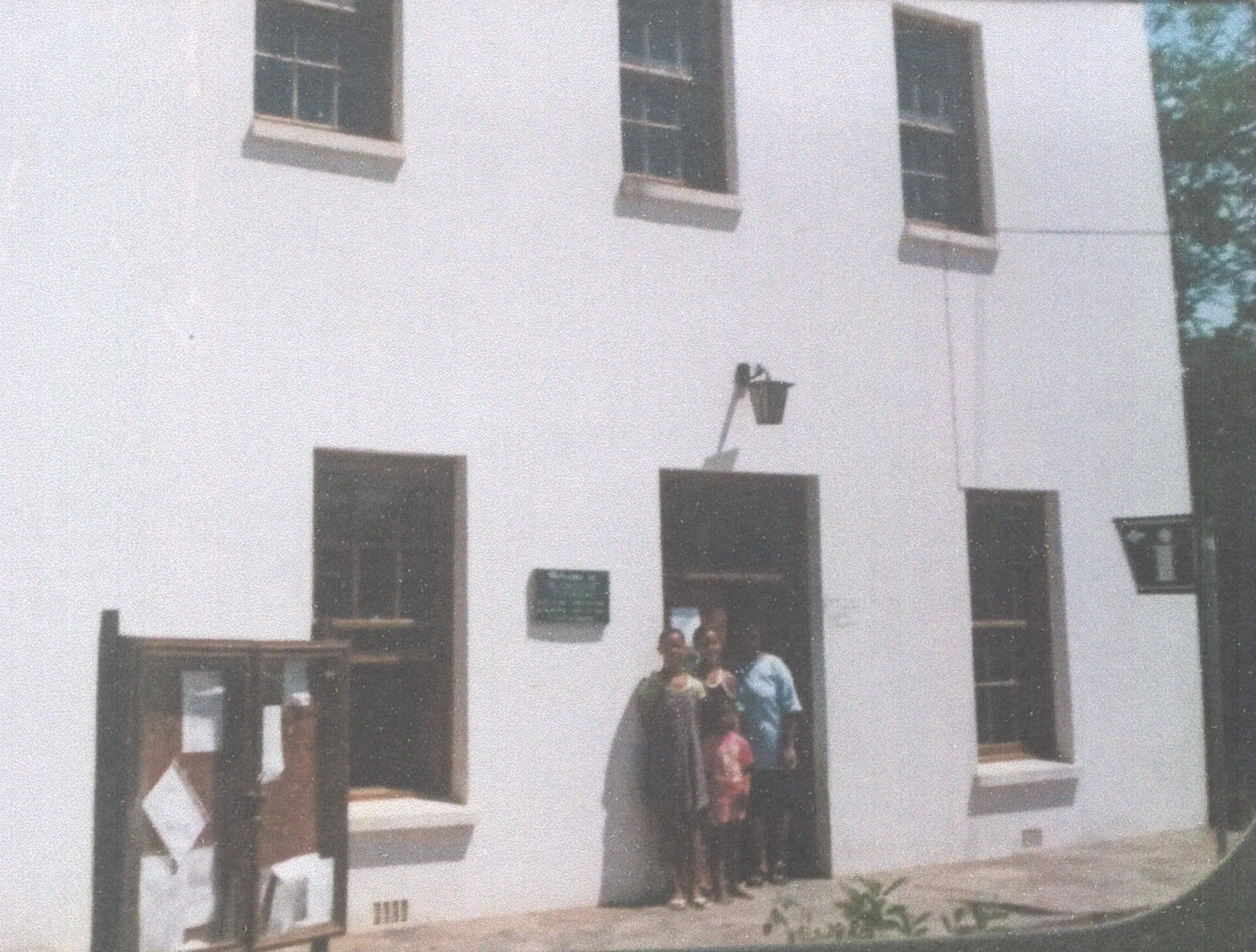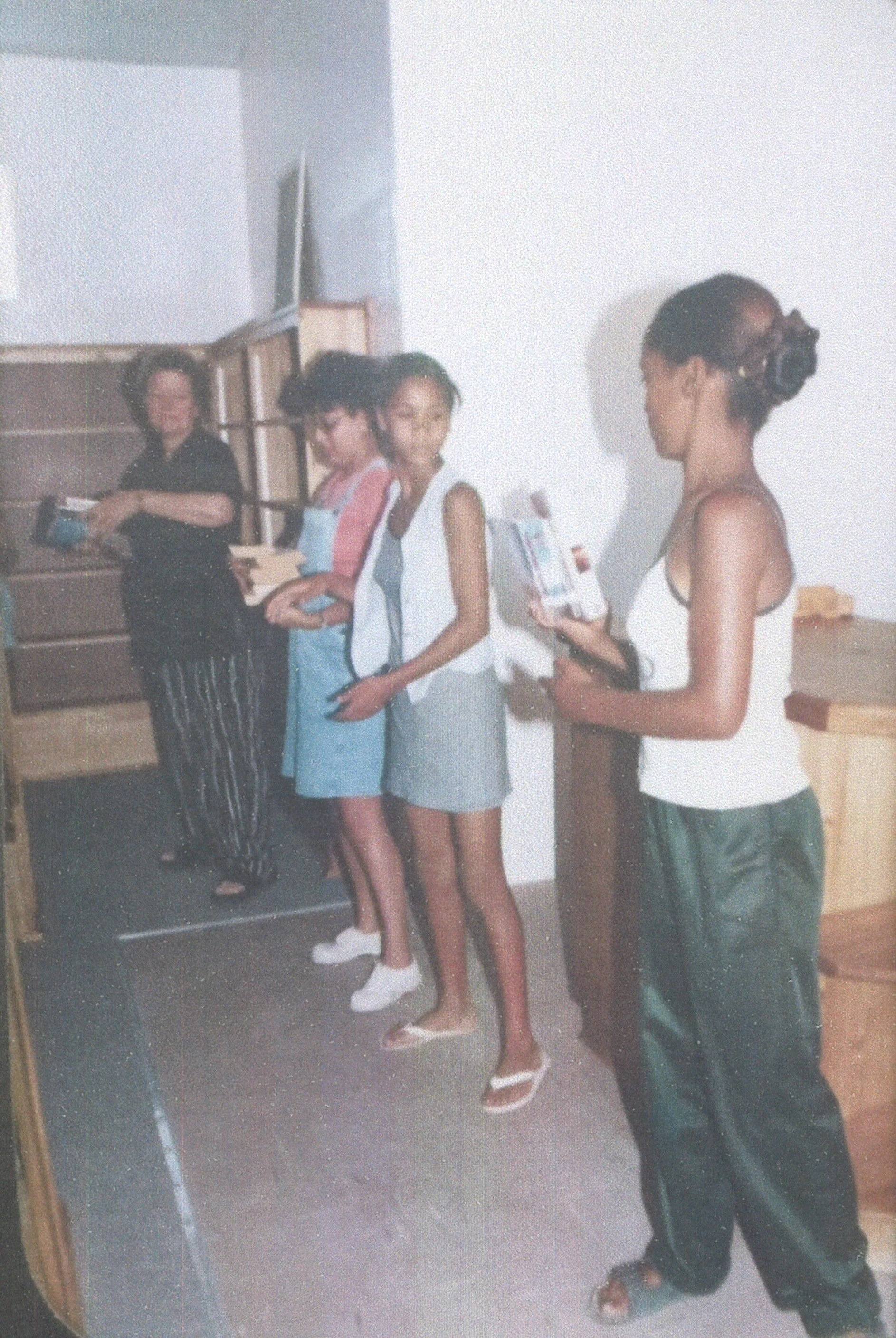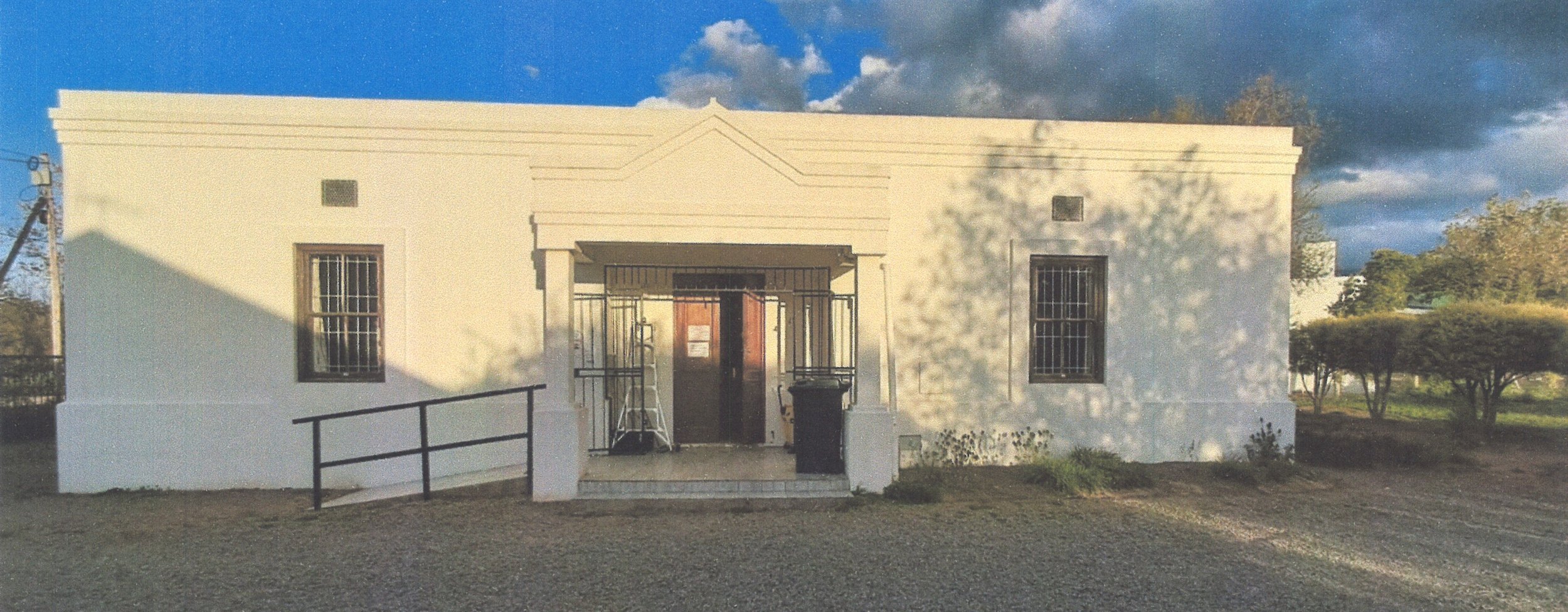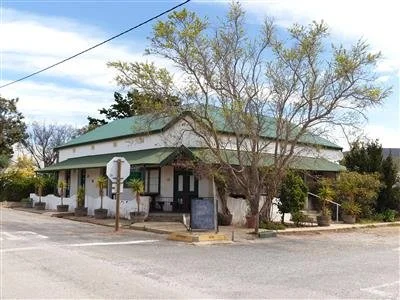
McGREGOR INSTITUTIONS
Pre 1856, post was originally delivered to a building, now a ruin, on the farm Ouplaas on the north-western side of the village. It was brought by donkey cart from Villiersdorp.
My grand-aunt remembers as a little girl running to meet the donkey cart with the post. She lived on Ouplaas and this would have been an excitement in her week. Ouplaas would have been on the route from Villiersdorp via le Chasseur to Swellendam, as there was no bridge across the Breede to Robertson at that time.
After the village was established an official Post Office was housed in a little Victorian building in Voortrekker Street, now called MnM (Made in McGregor).
The McGregor Museum has an envelope franked ‘Lady Grey’, dated 1861, which goes back to the founding years of the village.
As the village population grew, so did the need for a larger post office. It then moved into the building on the corner of Voortrekker and Church Streets. This is a typical Victorian-era commercial corner shop, and the building still retains some of the original furniture.
At one time the post was collected by a man called Jack Wessels, who owned a lorry and could simultaneously collect milk cans left at the side of the road in the mornings to take them through to the Nestlé factory in Robertson each day. Such was life in the little village.
THE McGREGOR POST OFFICE
At the turn of the 20th Century, the village had become more developed and had a population of around 1,000 people. A management board was established in 1894 and its success led to McGregor receiving full municipal status in 1907.
The original Municipal offices were situated in the Cape Dutch building on the corner of Church and Voortrekker Streets. This building boasts McGregor’s neo-classical style gable, with six pilasters, made famous by a Pierneef painting, and typical of those built in South Africa between 1860 and 1885. This building is a proclaimed PHS.
The Municipal offices were relocated in 2010 after an extensive reconstruction of a barn-type building in lower Voortrekker Street. It was remodelled in the Cape Revival Style, incorporating a full suite of municipal offices, including the community hall.
Curious Fact:
The gum plantations at the bottom of the village were planted by the municipality in the early 1900s for sales of timber to supplement municipal income. The trees were watered from the village dam (Vaal dam).
McGregor’s peaceful slumber was shaken when the first car made its appearance here. Astonished children's faces with wide eyes appeared in the doorways, housewives peered through small windows and men standing in their gardens stared skeptically at the new means of transport. As early as 1919 a serious complaint was filed with the municipality, namely 'the reckless driving of motorcycles through the public streets'. And so began McGregor’s first speed limit, of 10 miles per hour!
McGREGOR MUNICIPAL OFFICES
Between 1996 and 2000 the original library was situated in half of the building currently occupied by the McGregor Tourism Bureau. There were two staff members: Monica Bayman, who ran Tourism, and Soretha Simons, who ran the Library.
A new McGregor Library was built in 1999 by AP Kraukamp (Oom Akkels) from McGregor, with van Zyl’s Carpenters of Robertson building the cabinetry and shelving. The then-Mayor, Piet October, obtained funding from the Provincial Government.
The big move to the new facility was on 18 December 2000. Very helpful children formed a chain to pass the books along, first from the old shelves to the truck, and then from the truck to new shelves in the new building. They received hard-earned sweets, cooldrink and cake afterwards. Some things certainly take a village to accomplish.
McGREGOR LIBRARY
The McGregor clinic has been in various buildings. It was once in the rooms at the end of the old Post Office building on the corner of Voortrekker and Church Streets. This proved to be too small, and the current clinic was purpose-built in Tindall Street.
McGREGOR CLINIC
On the upper corner of Loop and Long Streets stands an imposing double-storey building, constructed in the 1870s. This was the old police station, gaol and magistrates’ court, which was adorned with beautiful and elaborate details such as sunrise fan lights, arches, pillars and coursed stonework. The back garden still boasts the two intact gaol cells, one for women and the other for men.
Just next door is a large pediment-end gable house built in 1899, for the policemen who guarded the gaol.
A later police station survived a petrol bomb attack, thrown by someone in the early hours of the morning. Luckily the fire was seen by residents who gave the alert. The culprit and motive remain unknown to this day.
When Voortrekker Street became the village’s main road, the police station took occupation of the current two modernist-style houses that have always had beautifully kept gardens with rabbits about. For a while the traditional blue police streetlight was changed for a pink one.
















